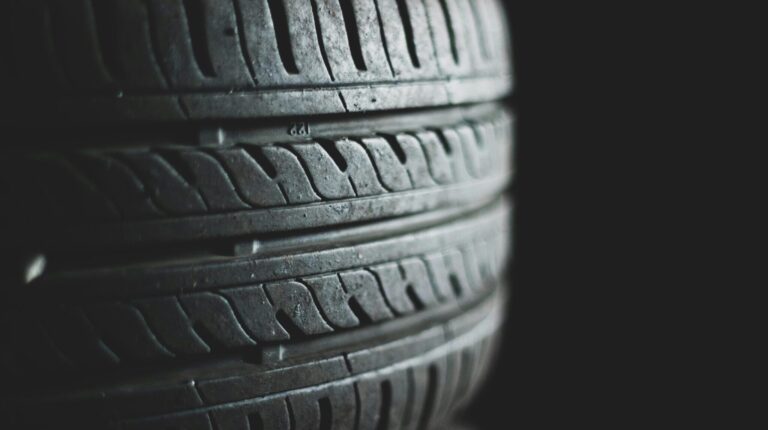A recently published series of scientific papers is calling for action to strengthen research and harmonize methodologies for the measurement and assessment of tire wear emissions. Tire emissions testing is a hot topic with the pending introduction of Euro 7, which for the first time, regulates tire wear – and featured on the cover of the March 2025 edition of ATTI.
The State of Knowledge: Tire Wear Emissions During the Use Phase series reviews over 850 peer-reviewed scientific publications from the past 40 years and states that it sees existing research on tire wear emissions as scattered, inconsistent and inconclusive.
Supported by the Tire Industry Project (TIP), the series consists of three distinct papers, each addressing a critical layer of tire wear emission knowledge. The first two published papers focus on the characterization of tire wear emissions and the assessment of their environmental impact. The third paper, expected to be published in late 2025, will focus on potential health impacts.
Dr Stephan Wagner, a guiding force behind the papers, explained, “The topic of tire wear emissions is extremely complex, multi-dimensional, and unfortunately only partially understood. While notable progress has been made over the years in analyzing such emissions, significant knowledge gaps and inconsistencies prevent a full understanding of their behavior and impact.
“Until these gaps are closed, there is a growing concern that decisions about tire emissions could be based on incomplete science. Resolving this requires all stakeholders — academia, industry and policymakers — to collaborate and drive for consistency, built on shared research and assessment models such as those proposed in our papers.”
Larisa Kryachkova, executive director at the Tire Industry Project, remarked, “Ever since our inception 20 years ago, our mission has been to strengthen scientific foundations to drive industry action. The SOK underscores why we need a concerted, multi-stakeholder response to close the knowledge gaps, now more than ever. It also reinforces our ambition to build a more open, collaborative research ecosystem, through initiatives such as the Open Call for Projects and the upcoming Tire Emissions Research Conference at MIT in Boston.”
Paper 1: Tire emissions during the use phase of tires — current and future trends
The paper stresses the importance of characterizing tire wear emissions by identifying what is released, how it is released and where it ends up. Emissions are defined as including particulates, volatiles and dissolved compounds, with particulate tire wear appearing as tire and road wear particles (TRWP) made up of tire tread, road pavement, brake systems and mineral dust.
In comparison, volatiles may come directly from the tire or from released particles, while dissolved compounds can occur from the tire itself on wet roads or through abraded wear. To assist risk characterization of tire emissions, the paper proposes a conceptual exposure model (CEM) that outlines emission mechanisms, affected environments, potential exposure and pathways through which this exposure may occur.
Factors influencing emissions, including driving style and road conditions, have also been considered. The paper calls for a tiered TRWP measurement framework and standardized protocols to enable reliable comparisons and informed decisions.
Paper 2: Risk assessment of tire wear in the environment — a literature review
This paper assesses whether current knowledge supports robust environmental risk assessment and concludes that data is insufficient, particularly on tire leachables and volatiles, due to inconsistent hazard information.
It notes that varying testing methods hinder comparisons and definitive conclusions, underscoring the need for harmonized guidelines. While there’s no standard method for assessing tire wear emissions, existing frameworks for microplastics are considered a starting point, with some adjustments to fit the unique nature of tire wear emissions.
A tiered hazard assessment has been proposed, beginning with tests on cryogenically milled tire tread (CMTT) and advancing to realistic conditions. The paper calls for collaboration among industry, policymakers and academia to develop standardized approaches for sampling, analysis and hazard evaluation.
“We are pleased with how the SOK project has evolved and the role it can play in ensuring a collective understanding of tire wear emissions, cutting through the misinformation. It has been an intense team effort for the past two years, and we appreciate how TIP supported this project, while maintaining our independence and autonomy. We hope that these papers will encourage the scientific community and serve as a catalyst for further research and standardization,” said Wagner.
To ensure an unbiased perspective, both papers were elaborated on and discussed with external scientists including TIP’s Assurance Group members Dr J Spengler from Harvard University and Dr How Yong from Beijing Normal University, as well as with the advisory panel expert Dr T Mincer from Florida Atlantic University.
In related news, two days of development testing for Pirelli’s 2026 tires were carried out at the Hungaroring on August 5 and 6, with support from McLaren and Racing Bulls on day one and Alpine and Scuderia Ferrari the following day. Read the full story


